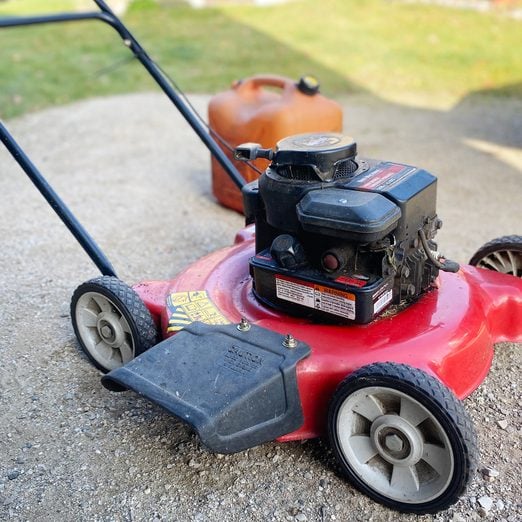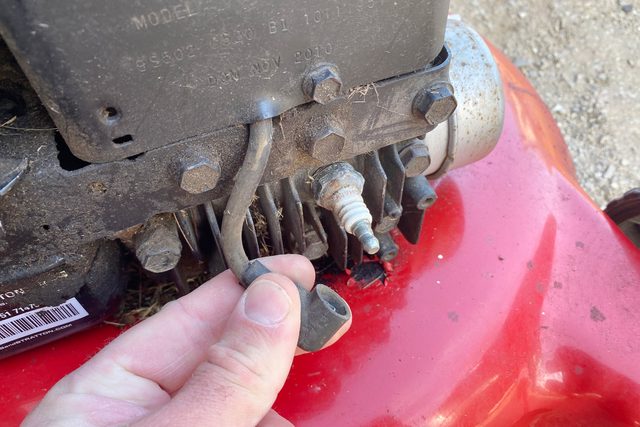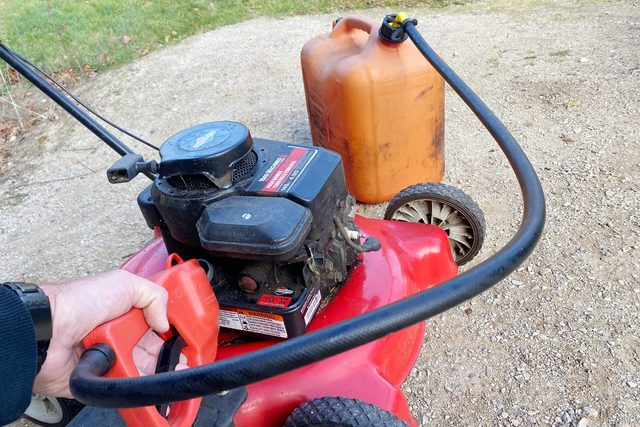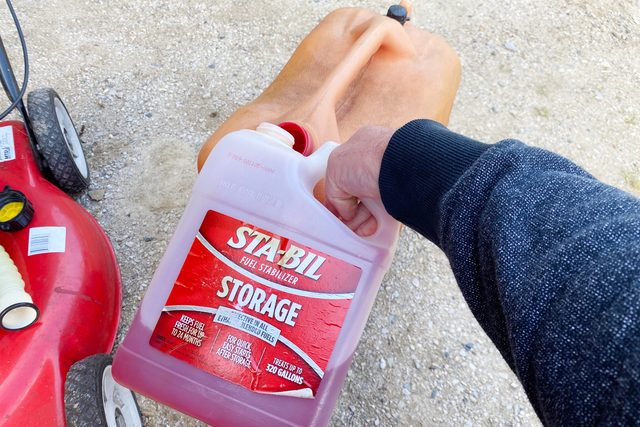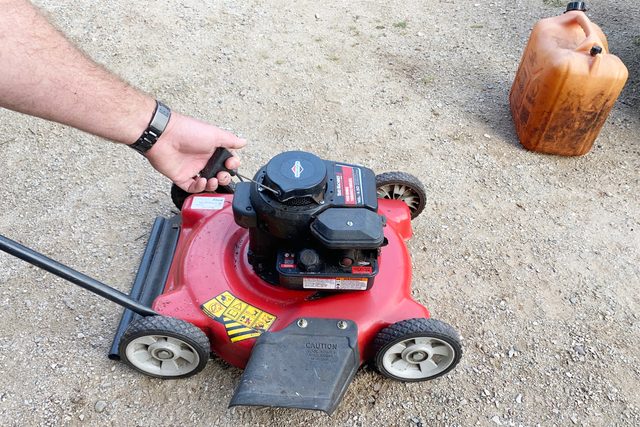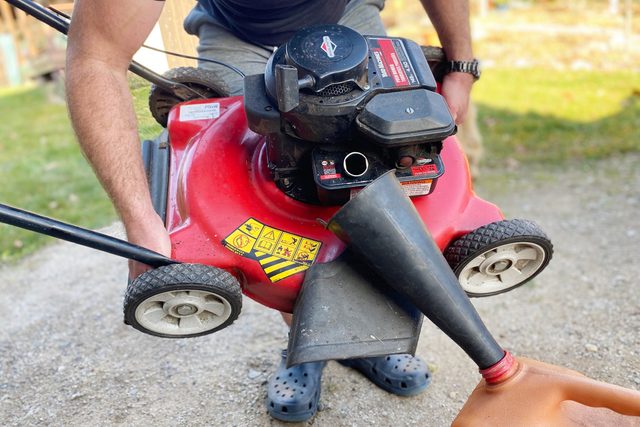How To Drain Gas From a Lawn Mower
When a lawn mower needs to be winterized, draining the gas is an important step. This detailed guide shows you how to drain gas from a lawn mower two ways.
Less than 30 minutes
Beginner
$20-50
Introduction
If you own a gas-powered lawn mower and want to be diligent about its upkeep, learning how to drain gas properly and safely is important. As is the case with many internal combustion machines, draining gas is an essential step in winterizing your lawn mower.
You need to drain the gas because it deteriorates. Leave some in your mower's fuel tank and carburetor over the winter, and there's an excellent chance your mower won't start in spring. Over time, oxidization causes gas to change in composition, decreasing its combustibility.
It's worth noting some premium ethanol-free fuels aren't nearly as susceptible to this problem. But most folks don't put premium gas in their lawn mower.
In practice, the easiest way to purge your mower of gas at the end of the season is by running it dry. Don't fill up completely before your last mow of the season, then run your mower until the fuel runs out. This clears the gas tank, fuel lines and carburetor in one easy step. If you forget to do this and finish the mowing season with a full or partial tank, you'll need to drain it manually.
We'll explain how to drain gas from a lawn mower, with and without a siphon pump.
Tools Required
- Extra-tall funnel (for non-siphon method)
- Gas storage can
- Hand pump-style siphon (aka siphon pump)
- Sawhorses or work bench (for non-siphon method)
Materials Required
- Bottle of fuel stabilizer
Project step-by-step (5)
Siphon Method
Disconnect the spark plug wire
- Start by locating the spark plug.
- Pull off the wire connected to the spark plug.
- Most lawn mower spark plug wires attach with an insulated spring clip. Usually you can disconnect it with your fingers. This ensures there’s no chance of accidental sparking and ignition while you’re draining the gas.
Siphon gas from tank
- Locate the gas cap.
- Remove the cap and open the fuel tank.
- Insert the sucking end of your siphon pump into the tank and the bottom end into your gas can.
- Place the gas can close to the mower to minimize the chance of the hose slipping out and spilling fuel.
- Use the siphon pump to suck gas from the tank until it stops flowing.
- Shake the siphon gently to remove as many drops of gas as possible. Then remove the pump from the mower and gas can and put it away. Wipe it dry with a paper towel if needed.
Add fuel stabilizer to gas
- Add fuel stabilizer to the gas in your can to ensure it lasts as long as possible in storage.
- Estimate how much gas is in your can, then add stabilizer accordingly. The ideal ratio is one ounce of stabilizer per two gallons of gas.
Run the lawn mower dry
- Finish up by moving your mower outside if you haven’t already.
- Reconnect the spark plug wire, then start up the mower and let it run until the engine dies.
- Complete any other steps for winterization of lawn mower, like changing the oil, checking and changing the spark plug (if necessary) and cleaning the underside.
Non-Siphon Method
Drain gas from mower
- Open your gas can and place the funnel in it.
- Open the gas cap, then carefully lift the mower and tilt it downward toward the gas can.
- Get someone to help you if you’re not sure you can lift and tilt the mower alone.
- Drain all gas from the mower into the funnel and gas can, slowly and carefully. Tilt the mower until all the gas drains out.
- Add stabilizer to the gas can, then run your lawn mower dry as described above.

